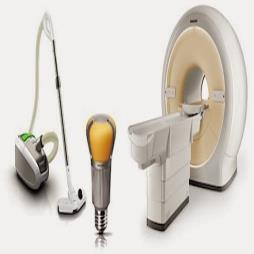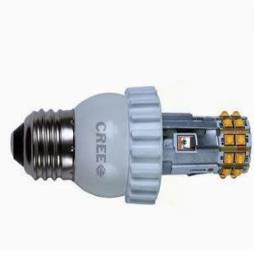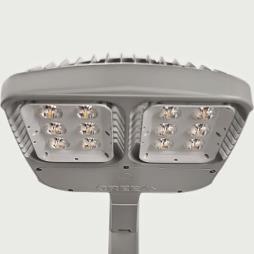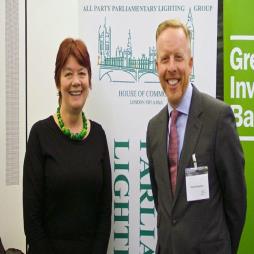Philips Biggest Contributor To Its Green Innovation Drive Is LED Lighting
17-03-2015
In its continued sustainability drive, Philips has increased its sales of ‘Green Products’ to 52% of total sales and has achieved its ‘Green Innovation’ target a year ahead of schedule. LED lighting has been a significant contributor to this good performance. By James Hunt:
Philips has increased its sales of ‘Green Products’ to 52% of total, with LED lighting being a significant contributor.
The Green Focal Areas are energy efficiency, packaging, hazardous substances, weight, recycling and disposal, plus lifetime reliability.
Philips
Royal Philips has reported good progress in its sustainability performance, with its ‘Green Product’ sales increasing to EUR 11.1 billion (£8.1 billion) in 2014, representing a record level of 52% of total sales.
Sustainability at Philips is, says the company, ‘all about improving the health and wellbeing of individuals through meaningful solutions’. Philips claims to develop, promote and market more energy efficient solutions for people in all markets and addresses the challenge with its Green Products, which must prove leadership in at least one ‘Green Focal Area’ compared with industry standards.
This is achieved either by outperforming reference products (which can be a competitor or predecessor product in the particular product family) by at least 10%, outperforming product-specific eco-requirements or by being awarded with a recognised eco-performance label. The Green Focal Areas are energy efficiency, packaging, hazardous substances, weight, recycling and disposal, plus lifetime reliability.
Another important sustainability focus for Philips is its ‘EcoVision’ program. This comprises key performance indicators in improving people’s lives, Green Product sales, Green Innovation, Green Operations, Health & Safety and Supplier Sustainability.
Indeed, sustainability and ‘Green Products’ have for some years been a crucial focus for Philips, so this sustainability performance boost is a welcome result, especially as – in 2014 – the company invested EUR 463 million (£337 million) in Green Innovation and achieved its EUR 2 billion (£1.45 billion) EcoVision program target a year ahead of time.
Furthermore, in another ‘green’ advance, the company reduced its operational carbon footprint by 5% compared with 2013.
LED lighting’s big contribution
Philips now majors in healthcare solutions, but it is its lighting sector that is the most important from the point of view of Voltimum users. This division increased its yearly investments, being the largest contributor to Green Innovation with EUR 255 million (£164 million), mainly targeted at advancing the development of LED solutions, which are inherently energy saving, compared with conventional lighting. LED lighting now represents nearly 40% of the firm’s division sales, while conventional lighting sales are declining.
Philips’ total product portfolio saw a slight increase in energy efficiency in 2014. For example, in Madrid, the company will renew the city’s entire lighting system with 225,000 energy-efficient lights, making it the world’s largest street lighting upgrade so far.
‘Substantial new growth opportunities’
Commented Jim Andrew, Chairman of the Sustainability Board and Philips’ Chief Strategy & Innovation Officer: “Achieving our EUR 2 billion Green Innovation target ahead of time is a clear proof of accelerating sustainable business and value creation across the company. We now improve the lives of 1.9 billion people, demonstrating solid progress towards our EcoVision commitments.”
Continued Jim Andrew: “We see that social and environmental considerations have become a crucial element in customers’ decisions and we believe that embedding circular economy principles into our businesses will offer us substantial new opportunities to accelerate our innovation and growth.”Visit the Novel Energy Lighting website for more information on Philips Biggest Contributor To Its Green Innovation Drive Is LED Lighting






